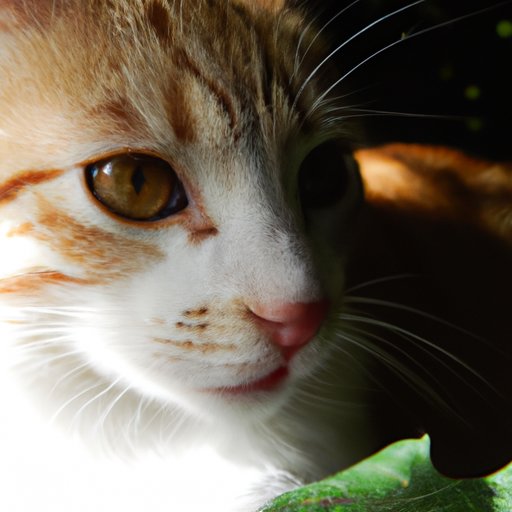
Introduction
Many pet owners believe that their cats can understand their emotions, but is there any truth to this idea?
In this article, we will explore the idea of cats’ understanding of human emotions and behavior towards their owners. We will look at scientific research, personal experiences of cat lovers, and historical beliefs that have led to the present-day perception of feline behavior. We will also discuss theories regarding interspecies communication and examine the correlation between human emotions and cat body language.
Research studies on animal behavior
Several studies have been conducted that give some insight into how cats perceive human emotions. A study conducted by Daniel Mills, a specialist in feline behavior and welfare, showed that cats respond differently to their owner’s emotions. The study was conducted with 46 cats, and the cats showed signs of attachment towards their owners.
Another study conducted by Kristyn rRennie investigated the relationship between cats’ emotional states and their attachment to their owners. The results of the study suggested that cats can become hypersensitive to their owners’ mood.
Personal experiences
Many cat owners have reported personal experiences that suggest that cats can understand human emotions. For example, some owners have reported that their cats have come to them when they were sad or upset.
One cat owner who had recently lost a loved one reported that her cat had started to spend more time with her and would sit quietly with her, purring and rubbing its head against her.
Historical beliefs
Historically cats have been portrayed as mystical creatures that possess supernatural powers. In ancient Egypt, cats were worshipped as sacred animals, and it was believed that they had the ability to communicate with the gods. In medieval Europe, cats were associated with witchcraft and were considered to be evil. These beliefs have impacted our perception of feline behavior today.
Interspecies communication
The concept of interspecies communication has been proposed by many researchers. It suggests that animals may have the ability to understand human emotions through gestures and behavior. It involves the exchange of signals between humans and animals that may convey emotional states and intentions.
Some researchers believe that felines may be more adept at reading human emotions than previously thought. They suggest that cats may be able to read subtle changes in facial expressions, tone of voice, and body language. These abilities may allow cats to understand how their owners are feeling.
Scientific explanations
Several scientific explanations may support the idea that cats can understand human emotions. Studies have shown that animals can detect pheromones that are produced by humans during emotional states.
Additionally, researchers have found that the mirror neurons in the brain of animals are activated when they observe humans’ emotional states. This activation may allow cats to empathize with their owners.
Experts’ opinions
Several experts in the animal behavior field have weighed in on the question of whether cats can understand human emotions. Some experts believe that cats are able to read and respond to their owners’ emotional states, while others are more skeptical.
Danielle Gunn-Moore, a professor of feline medicine at the University of Edinburgh, believes that cats particularly tune in to how their owners are feeling during times of change and stress.
Cat body language
Cats communicate primarily through body language, and there are numerous signals that cats use to convey their emotional state. For example, when a cat is feeling happy or relaxed, it may purr, knead its paws, or blink slowly. When a cat is feeling anxious or scared, it may flatten its ears, change its posture, or hiss.
When cats are around their owners, they may exhibit specific behaviors that indicate they are aware of their owner’s emotions. For example, they may rub against their owners, curl up next to them, or follow them around.
Conclusion
While scientific evidence is limited, many cat owners believe that their pets can understand and respond to their emotions. Personal experiences and historical beliefs have contributed to the perception that cats have supernatural powers.
Experts have suggested that cats may be more adept at reading human emotions than previously thought, through both body language and pheromones. Understanding and observing cat body language is essential to building a deeper relationship with our pets.
As pet owners, it is important to be aware of how our emotions can impact our cats and be mindful of their sensitivities. Ultimately, a deeper understanding of feline behavior and emotions can lead to a closer and more fulfilling relationship with our furry friends.





